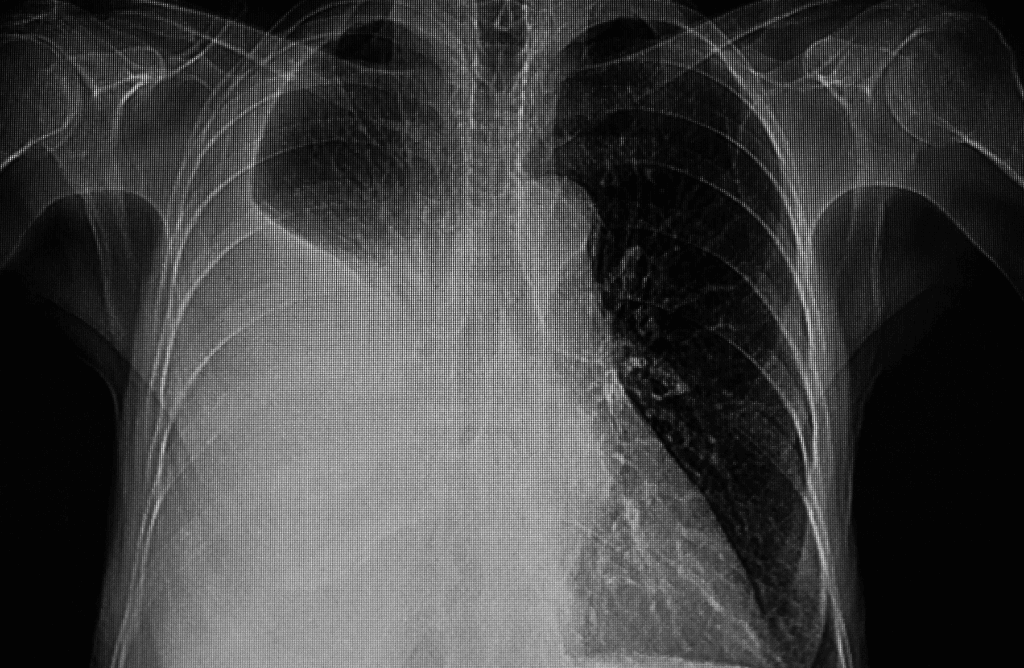Pleural Mesothelioma
Pleural mesothelioma is an aggressive type of cancer that forms in the pleura, the membrane that surrounds the lungs. The primary risk factor for this cancer is exposure to asbestos. The diagnosis can be challenging because the symptoms closely resemble those of many common respiratory diseases. Pleural mesothelioma is generally considered to be incurable, although there are treatments available that can extend life expectancy.
Written by: Daniel Wasserberg
Daniel Wasserberg became an Asbestos & NYC personal injury lawyer because he was motivated to assist victims of injustice by fighting corporate entities that value profit over the public’s health and welfare. Mr. Wasserberg has been appointed one of “The Top 10 Asbestos Lawyers” by The National Trial Lawyers.
Mesothelioma is an aggressive type of cancer that occurs in the membranes that surround certain organs, including the heart, digestive tract, lungs, and testes. Pleural mesothelioma occurs in the pleura, which surrounds the lungs.
Lung Cancer International reports that pleural mesothelioma is the most common form of mesothelioma, accounting for 80-85% of all cases. Our experienced NYC mesothelioma attorneys explain what you need to know.
Quick Links
Risk Factors for Pleural Mesothelioma
The primary risk factor for the development of pleural mesothelioma is exposure to asbestos. More than 80 percent of pleural mesothelioma patients have a history of asbestos exposure. The most common way that people get exposed is at work. The families of workers are also at risk because asbestos fibers can travel home on a worker’s clothing or hair and become aerosolized.
Asbestos exposure was more common before it became as heavily regulated as it is today. Asbestos is not completely banned in the United States and is still imported into the country. A journal published in the American Thoracic Society estimates that 1.3 million workers are currently at risk for occupational asbestos exposure. Their families could also be at risk.
According to the Occupational Safety and Health Administration (OSHA), there is no safe level of exposure to asbestos. Any exposure to this mineral has the potential to cause disease. However, being exposed for a longer time or to a higher level increases the risk.
Even a very short-term exposure to asbestos can increase the risk of pleural mesothelioma if the level of asbestos is high enough. For example, when the World Trade Center collapsed in 2001, a huge amount of asbestos was aerosolized. Many people inhaled a significant amount of asbestos, including victims and first responders. This is believed to have increased their risk for asbestos-related diseases, including mesothelioma.
How Asbestos Causes Pleural Mesothelioma
Asbestos is an extremely stable mineral, meaning that it’s difficult to break down. This is exactly the property that made it so useful for military and industrial applications. It is fire-resistant and also prevents corrosion by salt water and chemicals. However, this chemical stability is also the property that makes it so dangerous to human health.
Asbestos occurs in the form of microscopic fibers, which are long, thin, and sharp. These fibers are so tiny that when they’re present in the air, they can’t be seen, felt, or even smelled. If a person inhales the fibers, they can penetrate the lung tissue.
Any foreign substance provokes an inflammatory reaction by the body. The presence of the asbestos fibers stimulates this type of reaction, and immune cells attempt to break down the foreign substance through chemical means. However, because asbestos is so stable, this is unsuccessful. Asbestos is unaffected by anything the body can throw at it.
The inflammatory reaction continues. Over a long period of time, this inflammation causes damage to the tissues. This can lead to a chronic lung disease called asbestosis, in which scar tissue forms throughout the lung, causing it to become stiff and making breathing difficult. In addition, the inflammation can damage the DNA of cells, eventually leading to cancer.
It takes a long time after asbestos exposure for mesothelioma to develop. This is known as the latency period. For pleural mesothelioma, MayoClinic reports the latency period is typically from 20 to 40 years, but it can be even longer in some cases.
Symptoms of Pleural Mesothelioma
Some of the common symptoms of pleural mesothelioma include:
- Painful cough
- Shortness of breath
- Chest pain
- Unexplained weight loss
- Hoarseness
- Difficulty swallowing
- Lumps is tissue under the skin of your chest
These symptoms are similar to those of many other common diseases and illnesses, such as pneumonia, asthma, and chronic obstructive pulmonary disease (COPD, also known as emphysema). They’re also similar to those of other types of cancer, including lung cancer as well as cancers of other parts of the body that have spread to the lungs. These conditions are more common than mesothelioma, which can sometimes lead to a misdiagnosis.

Pleural Mesothelioma Diagnosis
Since the symptoms of pleural mesothelioma are similar to those of other common diseases, a variety of tests are necessary to establish the correct diagnosis. These may include:
- A chest X-ray, which is often used initially to check for conditions like pneumonia.
- A CT scan, which is a more detailed imaging study that allows doctors to localize the cancer as well as determine how extensively it has spread within the area.
- A biopsy, which involves taking out a small piece of tissue and sending it to the laboratory. A pathologist analyzes the tissue under a microscope to determine whether the cells are cancerous and, if so, what the specific type of cancer is. To get the biopsy, a minor surgical procedure is necessary.
In addition to determining that the patient has pleural mesothelioma, there are a few other pieces of information that doctors need, including the stage and cell type of the cancer.
- The stage of a cancer refers to how extensively it has spread within the body. This is usually reported as a number from 1 to 4, with higher numbers indicating more extensive cancer. Additional imaging studies, such as an MRI or PET scan, may be used to help determine the stage.
- The cell type of a cancer is determined based on certain characteristics of the mesothelioma cells. There are three main cell types: epithelioid, sarcomatoid, and biphasic. The cell types differ in how easily they spread to other parts of the body, which has a significant influence on treatment options. The sarcomatoid cell type generally has the fewest treatment options and the worst prognosis, while the epithelioid cell type has the most treatment options and the best prognosis.
Once all of these factors have been determined, the treatment plan can be developed.
Survival Rate for Pleural Mesothelioma
Mesothelioma tends to be an aggressive cancer. Because of this, most patients have a limited life expectancy. The American Cancer Society reports the overall five-year survival rate for pleural mesothelioma is 12%.
Translational Oncology reveals data from a 20-year analysis for the overall survival rates of pleural mesothelioma:
- One-year survival rate: 73.1%
- Three-year survival rate: 22.9%
- Five-year survival rate: 12%
- 10-year survival rate: 4.7%

Treatment Options for Pleural Mesothelioma
There are a few treatment modalities that can be used for patients with pleural mesothelioma. Most commonly, patients receive a combination of multiple treatment modalities, as this has been shown to improve survival. Some of the options that may be used for pleural mesothelioma include surgery, chemotherapy, radiation therapy, and immunotherapy.
Tumor-Removing Surgery
The goal of surgery is to remove as much cancer tissue as possible. Adjacent healthy tissues may also be removed to decrease the chances that the cancer will return. There are two main surgical procedures that can be used to treat pleural mesothelioma.
- Extrapleural pneumonectomy (EPP) is the more invasive procedure. On the affected side, the surgeon removes the pleura part of the diaphragm, the pericardium (the membrane around the heart), and sometimes other tissues as well. The goal is to ensure the removal of as many cancer cells as possible; the hope is that all cancer cells are removed, although this is difficult to achieve.
- Pleurectomy/decortication (P/D) is less invasive than EPP but is still a major surgery. The surgeon removes the pleura on the affected side and then removes any visible tumor tissue from the thoracic cavity.
Your surgeon will talk with you about which procedure they recommend in your case.
To be eligible for surgery, patients need to be in a relatively early stage and in good general health. Those with the higher-risk sarcomatoid cell type are generally not eligible for surgical treatment.
Chemotherapy
Chemotherapy involves using medications to target and destroy cancer cells. In patients who are not eligible for surgery, chemotherapy is often the primary form of treatment. It can also be given before, after, or even during surgery.
Most commonly, chemotherapy is delivered to the whole body through an IV; this is known as systemic chemotherapy. However, it can also be delivered directly into the thoracic cavity during a surgical procedure.
- Adjuvant chemotherapy is systemic chemotherapy that is given after surgery to decrease the chances that the cancer will come back.
- Neoadjuvant chemotherapy is systemic chemotherapy that is given before surgery to shrink the tumor and make it easier to remove.
- Hyperthermic intrathoracic chemotherapy (HITHOC) is a newer treatment option. During a surgical procedure, after the surgeon has removed cancerous tissue, a warmed solution of chemotherapy drugs is infused into the chest cavity. It’s left in place for a period of time, then washed out before the incisions are closed. This is modeled after a similar procedure that has been used successfully for years in treating peritoneal mesothelioma (which occurs in the abdomen). The Medicine journal indicates that HITHOC can extend survival by a few months, although more research is needed into this technique.
Chemotherapy for pleural mesothelioma almost always involves a combination of two medications, pemetrexed and cisplatin. According to the Journal of Clinical Oncology, using both of these together gives a better result than using just one of them. In patients who experience significant side effects from cisplatin, a similar medication known as carboplatin is sometimes used instead.
Radiation Therapy
Radiation therapy, sometimes known as radiotherapy, is a treatment method that uses energy to target and destroy cancer cells. As with chemotherapy, radiation therapy can be given before or after surgery.
The type of radiation therapy used for pleural mesothelioma is almost always external beam radiation therapy (EBRT). This involves aiming multiple beams of radiation at the tumor from different angles. At the site of the tumor, the beams cross, delivering a high dose of radiation to the cancer cells. Other areas receive less radiation, which reduces side effects.
A specific type of EBRT, known as intensity-modulated radiation therapy (IMRT), uses computer software to precisely control the doses of radiation delivered to specific tissues. This advanced technology can further reduce side effects and increase the effectiveness of radiation treatments.
Immunotherapy
Immunotherapy is a newer form of cancer treatment that activates the body’s own immune system to destroy cancer cells. There are two immunotherapy treatment regimens that are currently FDA-approved for use in pleural mesothelioma patients: Keytruda and a combination of Opdivo and Yervoy.
In both cases, immunotherapy is only approved to treat patients with unresectable pleural mesothelioma, meaning that they aren’t eligible for surgery. For those patients who are eligible for surgery, it remains the preferred treatment option.
Immunotherapy helps the immune system to more effectively target mesothelioma cells. Cancer cells often alter the function of certain proteins, allowing them to evade detection by the immune system. The immunotherapy agents restore the function of these proteins. This allows the immune system to find and destroy the cancer cells.
Although immunotherapy is different from chemotherapy, it can still have significant side effects related to excessive activation of the immune system.
Palliative Care
Not all patients are candidates for life-extending treatments. Those whose cancer is discovered in an advanced stage are often treated instead with palliative care, which focuses on maintaining the patient’s quality of life rather than extending life.
Some patients who are eligible for more aggressive treatments may instead choose palliative care to focus on enjoying the time they have left rather than enduring the side effects of cancer treatments. It’s important to express your wishes to your treatment team.
Palliative treatments for mesothelioma may include:
- Medications to manage symptoms, such as pain and nausea
- Surgery to remove particular tumors, or parts of tumors, that are causing significant symptoms; this type of surgery will not attempt to remove all the cancer, so it’s generally less invasive than surgery used for life-extending treatment
- Chemotherapy or radiation therapy to help shrink tumors that are causing significant symptoms
- Procedures to improve patient comfort, such as thoracocentesis to drain fluid from around the lungs
Patients who are undergoing more aggressive treatment with the goal of extending life may receive some palliative treatments as well to keep them more comfortable during their treatment.
Legal Considerations for Pleural Mesothelioma Patients
In many cases, mesothelioma patients were exposed to asbestos at work. Even after the dangers of asbestos were known, many companies did not put proper safety precautions in place. They chose increased profits over the safety of their workers. This put both workers and the workers’ families at risk.
Companies can be held legally liable for the harm they cause through their negligence. In some cases, mesothelioma patients can receive financial compensation, either through filing a lawsuit or through a settlement fund. This can make a huge difference in relieving the financial burden that mesothelioma often causes to families.
If you or a family member has mesothelioma, we invite you to contact Meirowitz & Wasserberg, LLP for a case review. We believe in seeking justice on behalf of injured workers and their families. Please get in touch with us so we can learn about your situation and let you know whether you might be eligible to file for compensation.

AVAILABLE 24/7
Get Your Free Case ReviewNotable Results
$32,000,000+
Asbestos Exposure Verdict
$5,100,000+
Mesothelioma Settlement
$4,000,000+
Mesothelioma Settlement
Mesothelioma Related Cases
related Mesothelioma cases by Meirowitz & Wasserberg
Mesothelioma cases handled by Attorneys at Meirowitz & Wasserberg
Asbestos related cases by Meirowitz & Wasserberg








